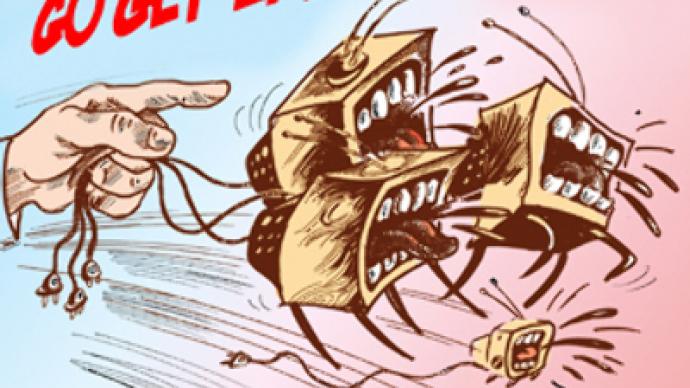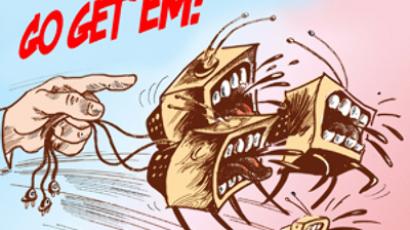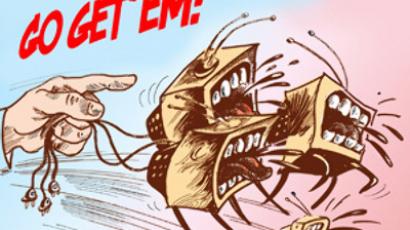Laos, 1968 – 75: a war that never happened

How the media covered a war that never was.
In parts of Laos a farmer who leaves his house in the morning to cultivate his land has a chance of returning home badly maimed, or not returning al all. Some lands in various parts of the world are known to grow stones. The land of Laos often grows rusty tennis-ball sized rounds of cluster bomb ammunition.
In the late sixties and early seventies more bombs fell on the territory of Laos than on the whole of Europe in WW II. However, in spite of the fact that between 1968 and 1974 the little capital city of Laos, Vientiane, was swarming with journalists reporting on the war, the true scale of the conflict at ‘the other theatre’ was revealed to the world only years later.
There was a lot of politics and action for the journalists to cover: for if Vietnam was the battlefield, the hot incarnation of the Cold War, Laos was the political and espionage pinpoint of that global conflict. And there was even its own ‘little war’ with Laos’s own communists and royalists, with pro-American right-wingers and neutralists who wanted peace but were ready to stage a military coup to achieve it. The conflict was also known as ‘The War of the Princes’, as if straight out of a fantasy novel, with every faction fighting in it, including the communists.
What was presumed absent, and thus received the least media coverage, was the participation of foreign troops and proxy armies fighting for a foreign cause. The presence of any foreign troops in the Lao territory was totally prohibited by the Paris Accords, a series of treaties signed by all sides in the conflict plus several foreign powers including France, the Soviet Union, the US and both Vietnams.
Vague silhouettes seen through spin
The media spin around the war in Laos was facilitated by the rough terrain and remoteness of the battlefields from the capital. It was almost impossible for a journalist to enter the areas where the fighting happened. The mountains covered in jungle were crossed by few roads, and getting around meant flying. Most of the aircraft flying in, out and around the theatre of war belonged to the US, the Royal Lao Air Force, the Patet Lao, Vietnam and international military observers, none of whom were too keen on having journalists on board.
When in 1969-1970 the conflict escalated beyond anything previously seen in Laos, the media hardly noticed. In fact, by that time thousands of Vietnamese volunteers were fighting on the side of the Lao Communists (the Patet Lao). Meanwhile, thousands of Thai soldiers dismissed from the Royal Thai Army and Air Force (their personal records removed from all files) were fighting alongside a whole army of tribal Hmong on the CIA’s payroll against the Patet Lao.
In addition, there were American pilots, ex-Air Force and civilian, flying for the CIA-funded ‘Air America’ airline, the main supplier of food and ammunition for the proxy army. There were also ‘The Ravens’, a unit of light piston-engine aircraft flying reconnaissance missions and performing forward air control. It was their job to seek and pinpoint targets for American bombers operating from Thai airfields. These aircraft were supposed to be bombing Vietnam but in fact were dropping their loads on suspected Patet Lao facilities inside Laos.
It was nothing personal, just business. A rare American combatant, Hmong or Thai mercenary, or a Vietcong or Patet Lao soldier was thinking in terms of capitalism versus socialism during combat operations. The supply route, the Ho Chi Min Trail without which the Vietcong could not fight in the South of Vietnam, and which went through northern and southern Laos, was the main ‘material’ reason for the existence of ‘The other theatre’. One side protected the trail, the other side attacked it.
It sometimes did become personal for certain individuals who swam in the waters of that strange war, restless like sharks, on constant alert. It did, for instance, for a CIA paramilitary officer known in south-east Asia as Tony Poe (Anthony Poshepny) who, ‘advised’ and led a regiment-strong unit of Hmong. Att some point he decided, for the sake of unbiased combat statistics and additional motivation, to give money awards to his soldiers in exchange for severed human ears. Thesev ears were to be cut off dead enemies. He discontinued the practice very soon when as he learned that his local ‘heroes’ had often been selling him ears cut off their own living teenage sons.
It was personal to those Vietcong and Patet Lao pilots who converted single-engine piston cargo and Antonov-2 biplanes into ground support fighter-bombers and attacked fortified Hmong positions on mountaintops.
It was also personal for those Western journalists who, at the height of the Cold war and hot fighting in Laos, managed to expose the origins of the story of ‘yellow rain’, a supposed Soviet chemical weapon allegedly used by the communist side in Laos in response to the American’s use of ‘agent orange’ there and in Vietnam. The story, widely spread by every news service in the Western world, turned out to be a fine exercise in media spin based on a ‘hint’ from one of the US intelligence organisations.
Most of the real action in the war totally escaped media attention. Even today, when scores of books written by veterans and academics can be found on the shelves of any well-stocked book store, the information that can be gleaned from them is, to say the least, incomplete. We now know much more about the deeds, thoughts and feelings of the Americans who fought in Laos than of their Lao adversaries. With the Vietnam War it is different At least some of the books published in Vietnam are translated into English, and there are a few oral histories recorded from both American and Vietnamese veterans at the same time and printed in the same volume. Nothing of the kind has so far been printed on the war in Laos.
What did they fight for?
It is still unknown to most of those Americans who believed they were at the pinpoint of the struggle against global communist domination that for their Patet Lao adversaries communism was not the main driving force but a link to a community of nations, including the Soviet Union and Vietnam, who had chosen a path of development and modernisation different from capitalism, and had achieved significant success. The main driving force in the conflict for the majority of the Patet Lao elite was patriotism (or nationalism in the better sense of the word), the wish to minimise the likelihood of the emergence of totally marionette governments, a freer hand in ruling their own country and a fast track to modernity.
It may be news to some of our readers, but in spite of communist beliefs and wide-spread card-holding party membership, up to the late 1980s secretaries of many regional committees of the Lao People’s Revolutionary Party were not encouraged to announce themselves to the local population. They worked quietly, practically underground, while others held administrative posts and represented the Vientiane government then headed by the president, Prince Suphanuvong, and the prime minister, a former general with solid battlefield experience (and secretary general of the party), Kaysone Phomvihane.
Of course, everyone in the country knew that the government was communist and communism was the official ideology. But throughout the war and after it, the loyalty of the Lao nationals who chose Patet Lao over the extremely foreign-influenced and erratically-behaving royal government, was not as much to ideology as to the leaders who had demonstrated their will to rule the land in a stable and mostly peaceful way, and to modernise with Soviet and Vietnamese help, and to feed and protect the citizens.
Witnessing the end of the spin
The post-war period of Lao history also became a victim of Cold War media spin. The Western newspapers, TV and radio bemoaned ‘Soviet domination’ of the quiet little country, which indeed became as quiet as it had been before the war, ‘a place where news happens once in a decade,’ as one Western colleague put it. In fact, the news just became ‘uninteresting’. Roads and bridges were built with Soviet help, new hospitals opened, an unprecedented national literacy programme, in which the state joined forces with Buddhist monks, was successfully implemented.
In the late 1980s I worked in Laos for a Soviet newspaper and was a member of a 5,000- strong Soviet community in a country of five million people. It could hardly be called ‘domination’. We lived by the rules agreed upon by the Lao and Soviet governments. We were never ‘bosses’, we were often friends, and many of the friends of that time are still glad to see me today.
When you live in Laos, and even if you later turn into a frequent visitor, you cannot get away from the war that ended thirty years ago. Wounds heal, new generations who never knew the war are born and raised in peace, soon to replace their fathers on the farms or the few, but increasing, industrial plants, or at the helms of businesses and the state. But the ‘bombies,’ the cluster bomb rounds, are still there, killing and crippling hundreds of people every year.
Since the collapse of the Soviet Union, media coverage of Laos has become scarce but much less biased. Volunteer groups work year-round, clearing the fields and woods of the ‘bombies,’. Many American veterans of ‘the other theatre’ have been involved in this work in the past two decades, and this work is well-publicised by the media. But the volunteers’ struggle is still an uphill battle. There are too many of the tennis-ball sized pieces of ammunition still popping out of the Lao soil, often in places already swept months or years ago.
In the sense of war-related media spin Laos is now an example of what happens when the spin gets rusty and falls off the body of information. The fact that the Lao do not publish many war memoirs in English or in their own language is a reflection of their unwillingness to remember and remind the world of the suffering brought upon them by the war.
A few years ago a group of Canadian and American volunteers who were de-mining a field in southern Laos stumbled upon a rusty container bomb of the type usually used for dropping chemical weapons from aircraft. The markings showed that it had originated in the US. The container, checked later by a chemical weapons expert, turned out to have traces of disintegration of sarin gas. Most probably the bomb was ‘misplaced’ during the infamous ‘Operation Tailwind’ in 1970 and lost by a bomber that was hit by anti-aircraft fire.
The discovery became known to a BBC colleague and me through an American charitable organisation in Laos, associated with Veterans for Peace. There definitely was a story in it – it may have taken independent expert analysis of the container, a bit of research and a lot of talking to the local villagers in order to find out about any impact on their health and livelihood. We were both prepared to do it. By then the volunteers had already run the story on the Internet, but no mainstream media had it yet.
Several days into the process a Lao friend invited me to a meeting with the holder of one of the higher offices in the Lao government. The official told me: “I hear that you are going to run the sarin story… I cannot order you not to, and there’s no point in preventing you from doing it, you will give it to someone else. Instead I am asking you to try to understand us. The war is over. It’s been over for thirty years. It is not in our character to dig up something rotten and stick it into the face of a foreign government only because their remote predecessors dropped it on our soil. I know it can create a scandal, but what will be the use of it for Laos?”
The same night we discussed the matter between us: one Russian journalist, one British journalist and one American veteran, all three long-time ‘Asia hands.’ We decided against running the story. That act could have been described as spin, silent spin, on our part. But I’m still sure we did the right thing.
Evgeny Belenkiy, RT, Vientiane – Bangkok














